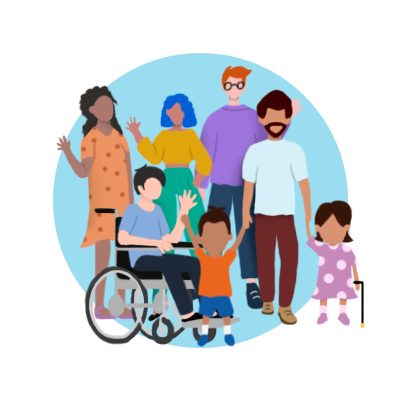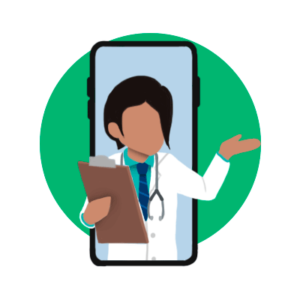If your goal is to counteract hair loss, you’ve likely heard of finasteride – at least as part of your hair loss solution. That’s because finasteride is one of the top treatments for hair loss that is FDA-approved and found to be effective.
However, it’s always a good idea to do your due diligence and research before using a new medication, and finasteride is no exception.
What do you do when you want the benefits of finasteride to improve your hair retention, yet you’re concerned with potential side effects? In this article, we overview ways to minimize any unwanted side effects of finasteride for hair loss and get the most out of the treatment.
What side effects of Fin should you try to avoid?
The oral tablet form of finasteride has the potential for side effects, though they tend to be considered understood and only seen rarely. Nonetheless, they are side effects that many men would prefer to avoid altogether — or it could be that you’ve already experienced them yourself and want a different option.
The reason these side effects are undesirable is that the main ones affect a man’s sexual life. Potential side effects of oral finasteride include:
- Erectile dysfunction and other sexual impotence
- Decreased ejaculatory volume
- Decreased libido
An article in the Indian Dermatology Online Journal took a comprehensive look at a range of studies done on sexual side effects associated with finasteride. It discussed dermatologists’ research showing that sexual side effects in general happen only about 2-4% of the time to those taking finasteride.
This research called this rate “infrequent,” but the men affected by it may not feel the same.
The article also took a look at a long-term study that found that sexual side effects decreased over time when men continued taking finasteride, noting that severity of side effects decreased to the placebo’s level after one to five years of continued use. Basically, it’s up to you to decide if you’d want to wait it out and see if any side effects reduce after a while or try to find an alternative method altogether. And of course, it’s best to discuss that with your doctor.
The article also discussed sperm changes in men taking finasteride, including at low doses. Changes seen affected:
- Sperm counts
- Motility
- DNA
- Morphology
- Meiotic pattern
It’s important to be aware of these potential side effects, especially if you’re trying to have a baby.
Sexual side effects are not the only possibility. Other potential side effects include:
- Skin rash
- Allergic reactions
- Depression
- Drug interactions
- Increased risk of certain types of prostate cancer
More recent research has found a possible link between low-dose finasteride and side effects of persistent sexual dysfunction and suicidal ideation, and another recent study found significant levels of depression, anxiety and suicidality in people under 45 years old taking finasteride for alopecia.
We recommend you discuss possible side effects with your doctor before taking oral finasteride. If you’re already taking it, talk to your doctor about any side effects you’re experiencing.
Related reading: Should You Take Finasteride Every Other Day?
Top ways to reduce side effects of finasteride
Although this information seems daunting, there are ways to minimize or eliminate some or all of these side effects. Let’s cover a few ways to avoid or reduce those unwanted side effects:
1. Lower your dose
One option is to reduce the amount of oral finasteride you take. It may not be recommended by your hair loss physician, but you could consider cutting your pills or taking one every few days. Another option is to talk to your physician to request a lower dose. Let them know your concerns about side effects during the discussion.
Note: Taking oral finasteride at a lower dose or reduced frequency may reduce efficacy. Studies have also still found side effects associated with low-dose finasteride.
Source: Keeps
2. Switch your application method from oral pills to a topical finasteride solution
You may have noticed that the more serious side effects are associated with the oral finasteride that’s taken as a pill rather than the topical finasteride that’s applied to the scalp. You can reduce the risk of side effects associated with oral finasteride by using a topical solution instead.
Source: Hims
Topical application has a reduced risk of sexual side effects compared to the oral version. The most common side effects of topical finasteride tend to be associated with the application site itself, which in this case is the scalp. Side effects have included symptoms like itching, burning, redness and irritation.
Best topical finasteride providers online (US) | |||
|---|---|---|---|
| Active ingredients | Finasteride Minoxidil Retinoic acid Hydrocortisone | Finasteride Minoxidil | Finasteride Minoxidil Tretinoin Biotin |
| Price per month | $79 | $50 | $59 |
| Application type | Solution | Spray | Gel or solution |
| Customizable? | ✅ | ❌ | ✅ |
| Doctor’s visit included? | ✅ | ✅ | ✅ |
| Website |
3. Switch to an over-the-counter alternative
Not all hair loss solutions require a prescription. Minoxidil is an over-the-counter solution that is also effective for hair loss treatment. This is a different topical option instead of taking an oral hair loss treatment.
Source: Hims
Note: Using minoxidil alone has lower efficacy compared to using finasteride alone. Using both together provides the best results.
Best Minoxidil providers | ||||
|---|---|---|---|---|
| Active ingredients | Minoxidil 5% | Minoxidil 5% | Minoxidil 5% | Minoxidil 5% |
| Application type | Foam or solution | Foam or solution | Drops | Drops |
| Price per month | $28.99 per month | $20 – $30 for 3 months | $15 per month | $16 per month |
| Website | |
4. Switch to an all-natural supplement
Supplements offer another alternative to finasteride and to medication-based treatment in general. A couple of top options include Nutrafol or Hims Biotin. These help you avoid the potential side effects of finasteride. However, keep in mind that supplements have the potential for side effects as well. It’s best to read the label and perform research before taking them, and ask a physician if you have a pre-existing health condition or are taking other medications.
Note: Taking an all-natural hair loss supplement may reduce efficacy compared to using finasteride.
Which hair loss treatment is best?
Use this chart to compare your hair loss treatment options for reducing any side effects of finasteride.
Best oral finasteride alternatives | Oral finasteride (reduced dose) | Topical finasteride | Over-the-counter alternative | All-natural supplement | |
|---|---|---|---|---|---|
| Avoid oral finasteride side effects? | ❌ | 🟡 reduced side effects | ✅ | ✅ | |
| Equally effective? | Possibly reduced | ✅ | Less effective | Less effective | |
| Active ingredient | Finasteride, oral | Finasteride, topical | Minoxidil | Nutraceutical blend | |
| Top brands | | | |||
The verdict: What’s the best way to reduce side effects of finasteride without reducing efficacy?
The best option is to switch from taking oral finasteride pills to using a topical finasteride solution that you apply to your scalp. This method is:
- ✅ Safer, with fewer associated side effects
- ✅ More effective, since it allows you to combine multiple active ingredients into one—for instance, using both finasteride and minixodil together is more effective than using one alone
- ✅ More personalized, as custom compounding allows for personalized dosage and formulas built for your individual scalp and needs
What has been your experience with using finasteride? Have you found an alternative to oral finasteride pills that’s worked best for you? We’d love to hear about it in the comments below!
Discover more innovative hair loss startups
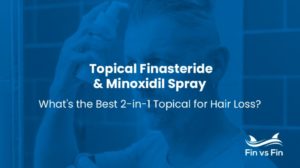
Topical Finasteride and Minoxidil Spray Review – What’s the Best 2-in-1 Topical for Hair Loss?
If you’ve been looking into treatment for pattern hair loss (androgenic alopecia), you may have come across the ingredients minoxidil and finasteride, which are the

Tretinoin and Hair Loss: Does It Help Regrow Hair?
Key Takeaways Topical tretinoin may support hair growth by increasing circulation to the scalp and boosting cell turnover. Up-to-date clinical research indicates that tretinoin can
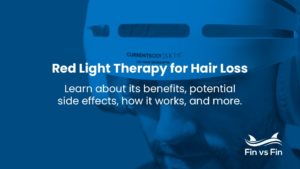
Red Light Therapy for Hair Loss: Does It Promote ReGrowth?
Key Takeaways Red light therapy can safely and effectively treat hair loss in some individuals. It typically takes four to six months to see results

How to Get Oral Minoxidil Online: A Complete Guide
Key Takeaways Oral minoxidil is a good option for individuals with androgenic alopecia who experience side effects from topical minoxidil or who are not seeing

Does High Blood Pressure Cause Hair Loss?
Key Takeaways While some studies do show a potential association between high blood pressure and hair loss, more research is still needed. High blood pressure
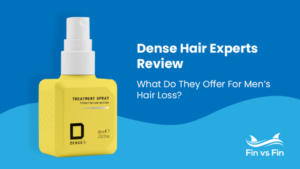
Dense Hair Experts Review: What Do They Offer for Men’s Hair Loss?
Dense Hair Experts Overview Price: £59.99 (or £47.99 on subscription) Prescription products: Finasteride, dutasteride OTC products: Minoxidil, shampoo, conditioner, vitamins, styling products Active ingredients: Finasteride,



